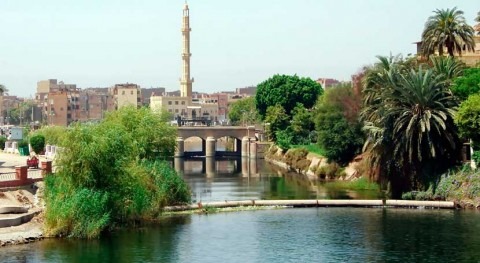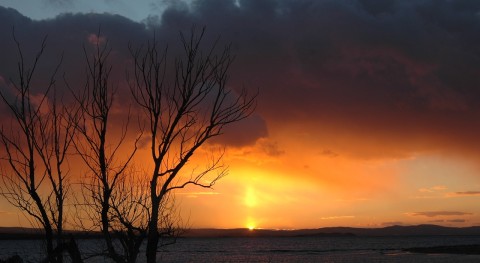What is the longest river in Nigeria?

Nigeria is blessed with numerous natural resources, including the mighty Niger River, which is the longest river in the country. The Niger River is more than just a source of water for local communities; it is a vital artery that has supported the lives and livelihoods of people in the region for thousands of years. This article will take you on a journey to discover the natural beauty and ecological significance of the Niger River. We will explore the history, culture, and natural wonders that this incredible waterway holds. Join us as we unravel the mystery of the longest river in Nigeria.
Index
- Brief History of Niger River
- Source of the Niger River
- The Flow of the Niger River
- The Delta Region of the Niger River
- The Niger River and Its Ecological Significance
- Biodiversity of the Niger River
- The Niger River and Human Settlements
- The Niger River and Agriculture
- The Niger River and Transportation
- The Niger River and Fishing
- The Niger River and Energy
- The Niger River and Tourism
- Challenges Facing the Niger River
- Conclusion
- FAQs
1 . Brief History of Niger River
The Niger River has played a significant role in the history of West Africa. It served as a major trade route for the trans-Saharan trade network, connecting West Africa with North Africa and the Mediterranean world. The river was also an essential factor in the growth of the ancient empires of Mali and Songhai. During the colonial period, the Niger River was used by European explorers and traders to penetrate the interior of West Africa.
2 . Source of the Niger River
The Niger River originates in the Fouta Djallon plateau in Guinea, where its two main tributaries, the Bani and Milo rivers, converge. From there, it flows northeast through Mali, Niger, and Benin before emptying into the Gulf of Guinea in Nigeria.
3 . The Flow of the Niger River
The Niger River is approximately 4,180 km long, making it the third-longest river in Africa after the Nile and Congo rivers. The river's flow is characterized by seasonal flooding, which occurs between July and November, with peak flows in September. During the dry season, the river's water level drops significantly, making navigation difficult.
4 . The Delta Region of the Niger River
The Niger River's delta region is one of the most extensive wetlands in Africa, covering an area of about 20,000 square kilometers. The delta is home to numerous plant and animal species, including the West African manatee, hippopotamus, and crocodile.
5 . The Niger River and Its Ecological Significance
The Niger River is a vital ecological resource that supports a diverse range of ecosystems and species. The river's floodplains and wetlands are critical habitats for migratory birds, fish, and other aquatic animals. The Niger River also supports the livelihoods of millions of people who depend on it for fishing, agriculture, and transportation.
6 . Biodiversity of the Niger River
The Niger River is home to an incredible variety of flora and fauna. The river's ecosystem includes over 250 fish species, including the Nile perch, tigerfish, and electric catfish. The Niger River is also home to the West African manatee, an endangered species that is endemic to the region.
7 . The Niger River and Human Settlements
The Niger River has played a critical role in the settlement of human communities along its banks. The river's fertile floodplains and wetlands provide a reliable source of water and fertile soil for agriculture. The river has also been used for transportation, facilitating trade and commerce between communities.
8 . The Niger River and Agriculture
The Niger River basin supports agriculture in several West African countries. The river's floodplains and wetlands provide a reliable source of water and fertile soil for farming. The crops grown in the region include rice, maize, millet, and sorghum. Agriculture is a significant source of income and employment for people living along the Niger River.
9 . The Niger River and Transportation
The Niger River has been a critical transportation route for centuries. The river is navigable for over 1,000 kilometers from its mouth in Nigeria, providing access to Mali, Niger, and Benin. The river's transportation network has facilitated trade and commerce between communities and countries in the region.
10 . The Niger River and Fishing
Fishing is a vital source of food and income for communities living along the Niger River. The river is home to over 250 fish species, including catfish, tilapia, and perch. Fishing is done using a variety of methods, including traditional nets, hooks, and lines.
11 . The Niger River and Energy
The Niger River has significant hydroelectric potential, which is being harnessed to provide electricity for communities in the region. The Kainji and Jebba dams, located on the Niger River in Nigeria, generate a combined 1,350 MW of electricity.
12 . The Niger River and Tourism
The Niger River is also a popular tourist destination. Visitors can enjoy boat rides along the river, bird watching, and fishing. The river is also home to several national parks and nature reserves, which provide opportunities for wildlife viewing and ecotourism.
13 . Challenges Facing the Niger River
Despite its significance, the Niger River faces several challenges, including pollution, climate change, and unsustainable use of its resources. Industrial and agricultural activities have led to pollution of the river, affecting both the environment and the health of communities living along its banks. Climate change is also affecting the river, leading to increased flooding and droughts.
14 . Conclusion
The Niger River is a vital ecological, social, and economic resource for West Africa. The river has played a crucial role in the history and development of the region, and its significance continues to this day. However, the Niger River faces several challenges that threaten its future. Sustainable management and conservation of the river's resources are crucial to ensure its continued viability and the well-being of communities that depend on it.
15 . FAQs
What is the length of the Niger River? The Niger River is approximately 4,180 km long.
What is the source of the Niger River? The Niger River originates in the Fouta Djallon plateau in Guinea.
What is the significance of the Niger River? The Niger River is a vital ecological, social, and economic resource for West Africa.
What challenges does the Niger River face? The Niger River faces several challenges, including pollution, climate change, and unsustainable use of its resources.
Is the Niger River a popular tourist destination? Yes, the Niger River is a popular tourist destination, offering opportunities for boat rides, wildlife viewing, and ecotourism.






